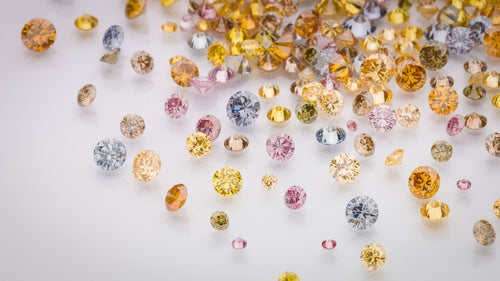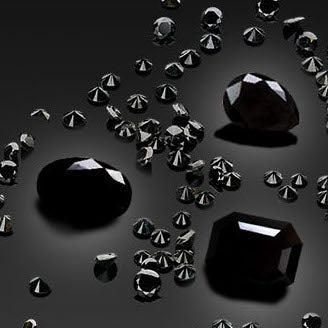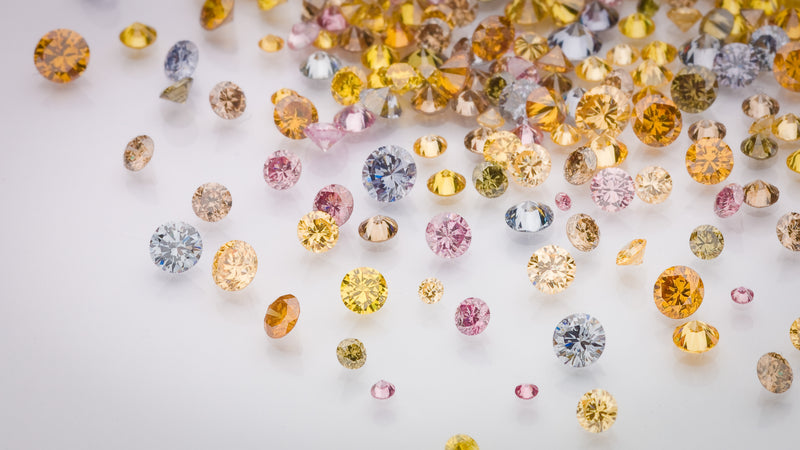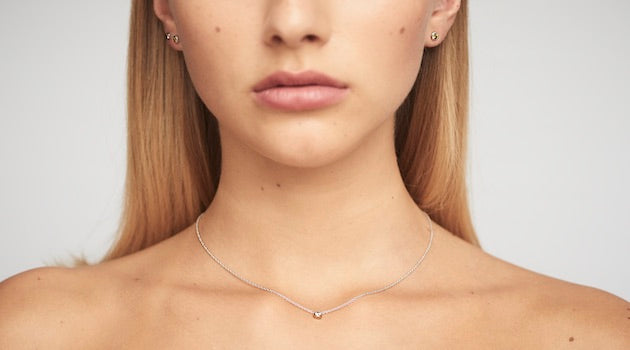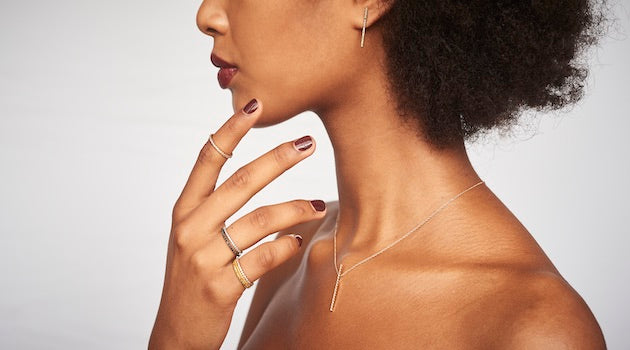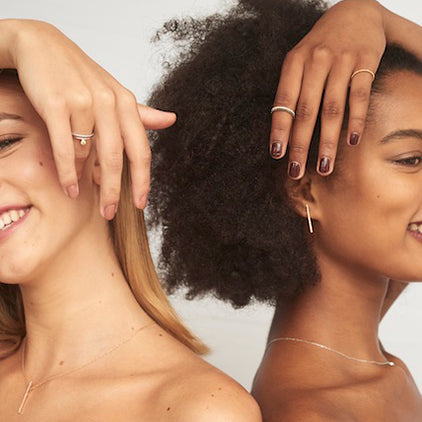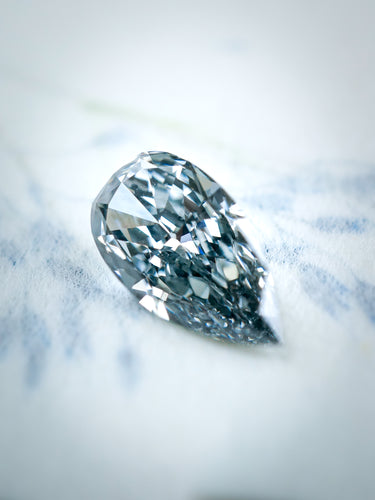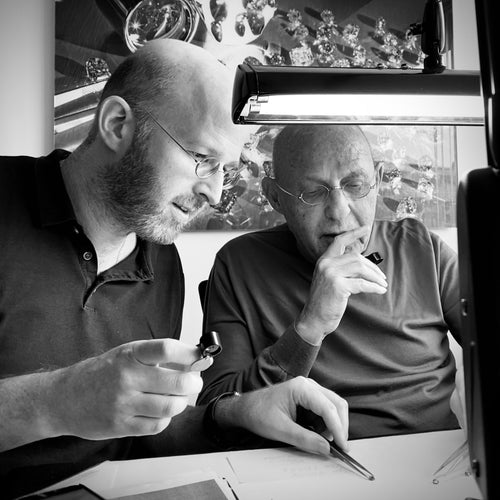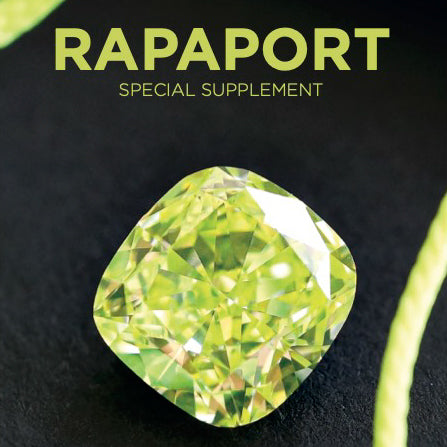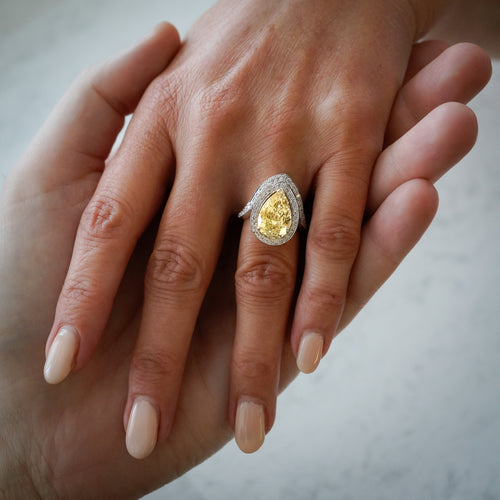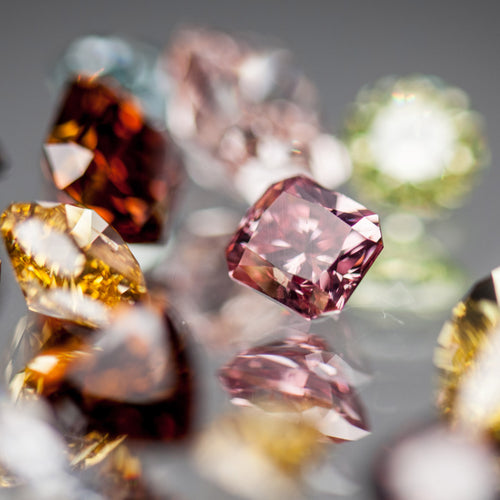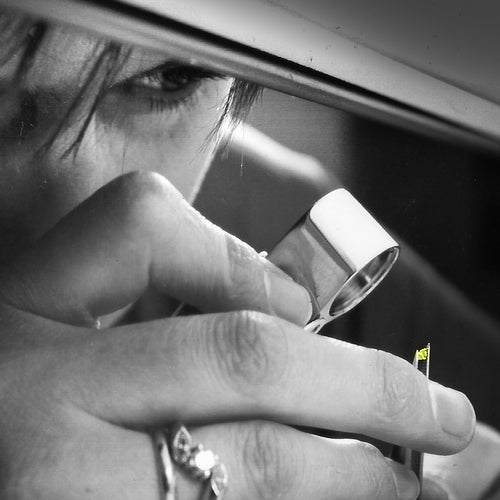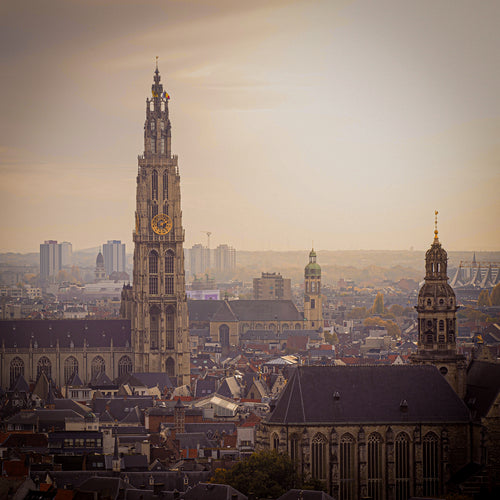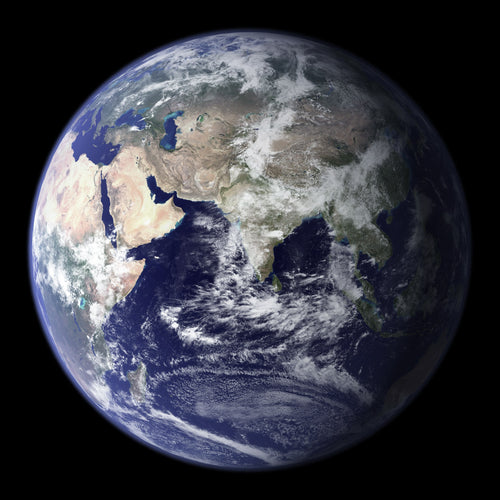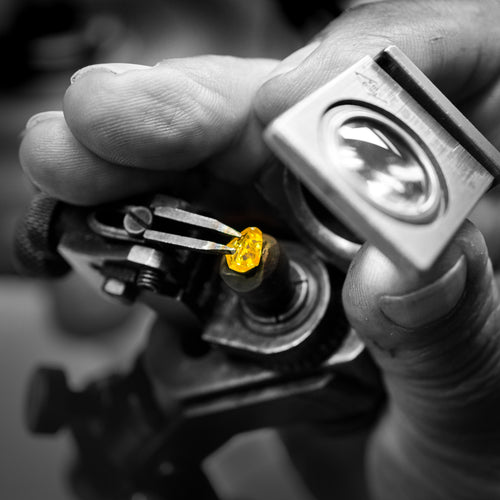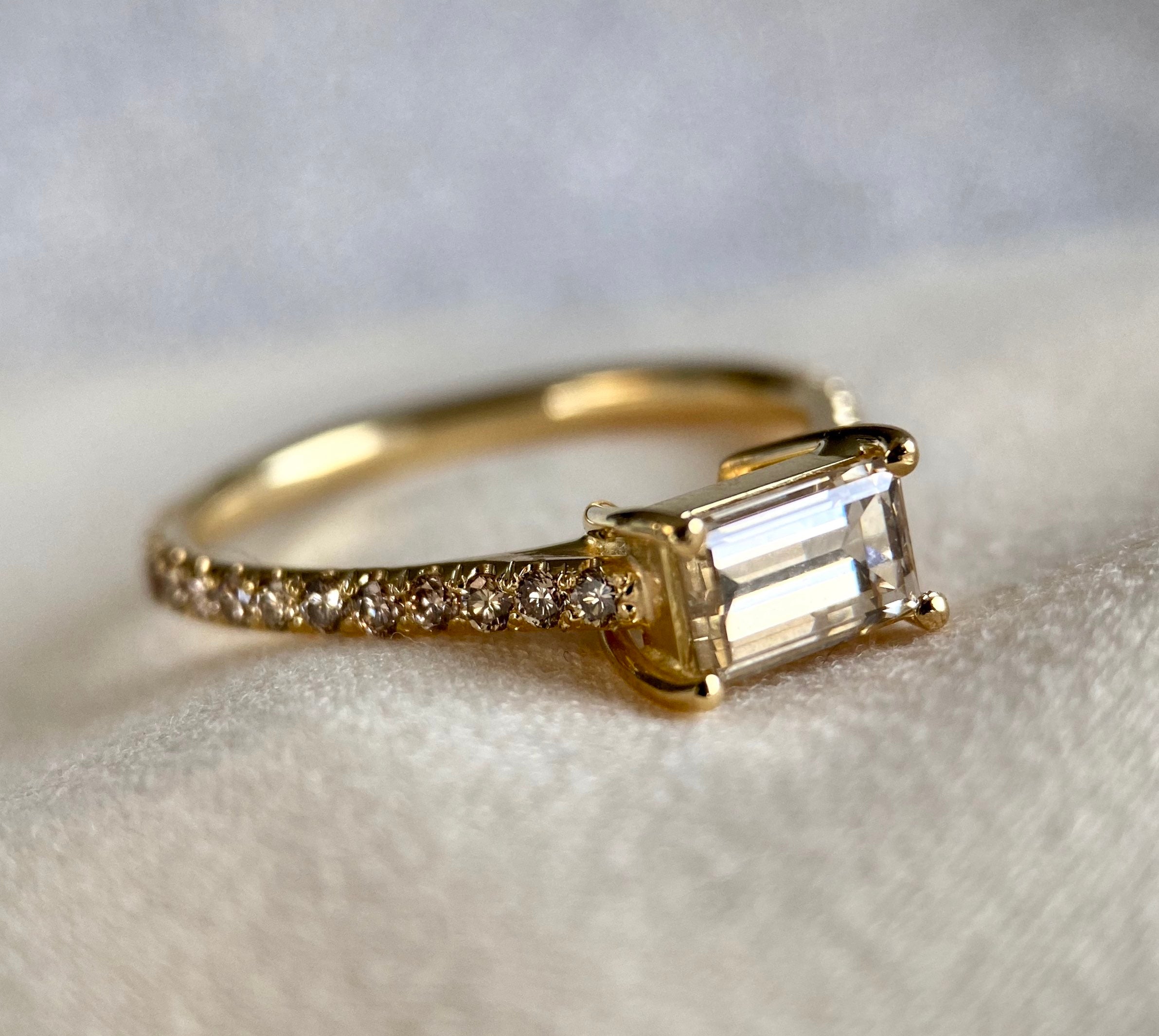

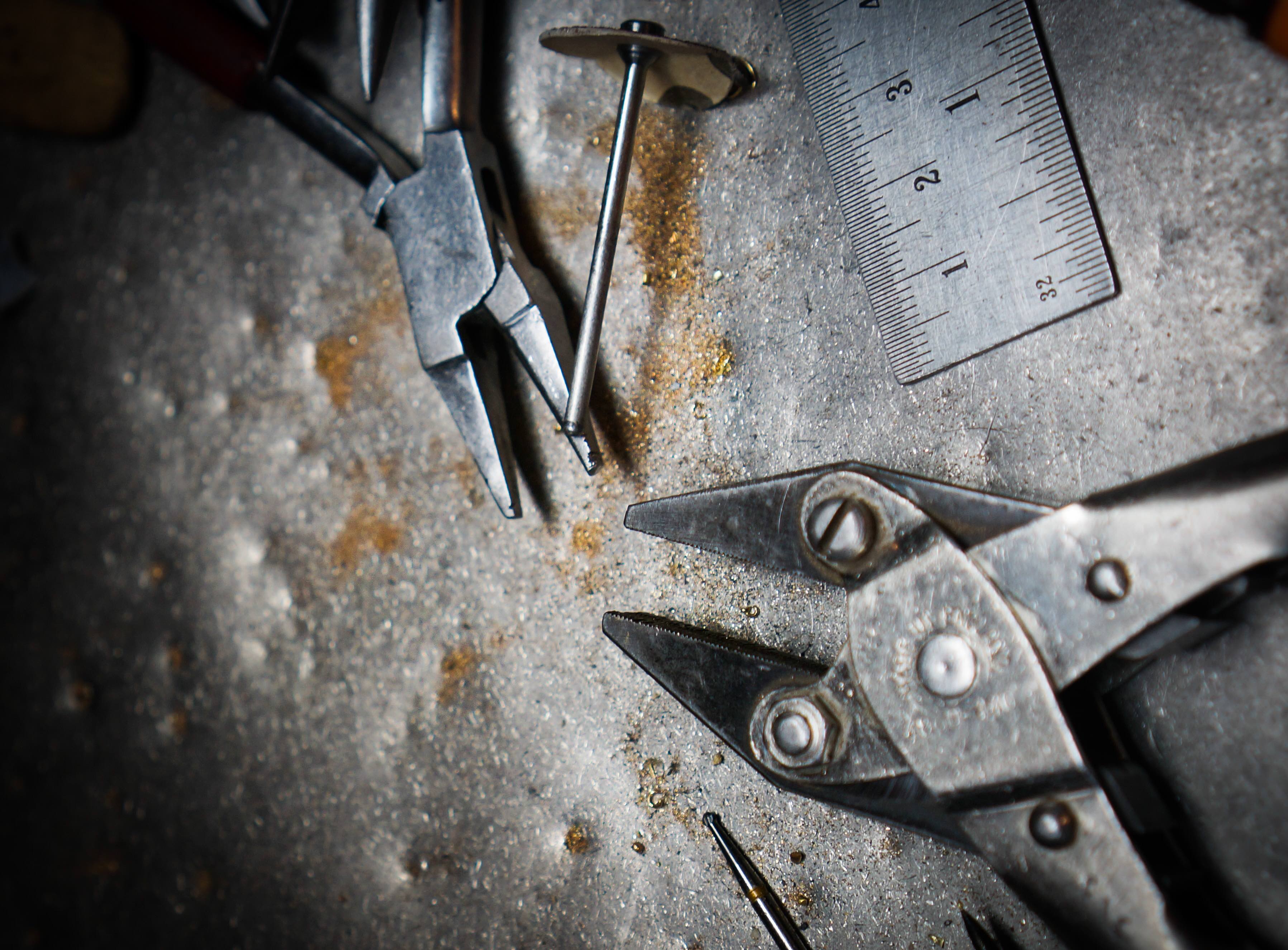
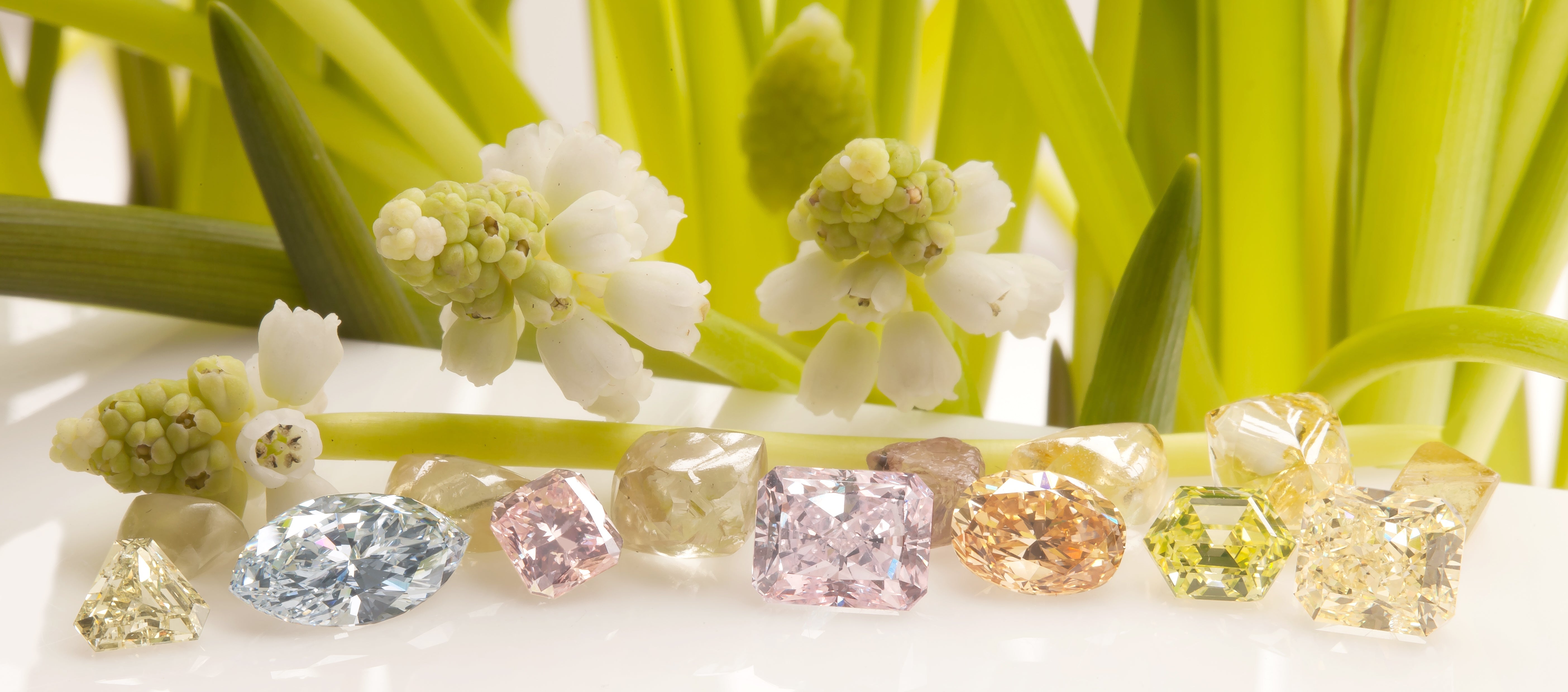

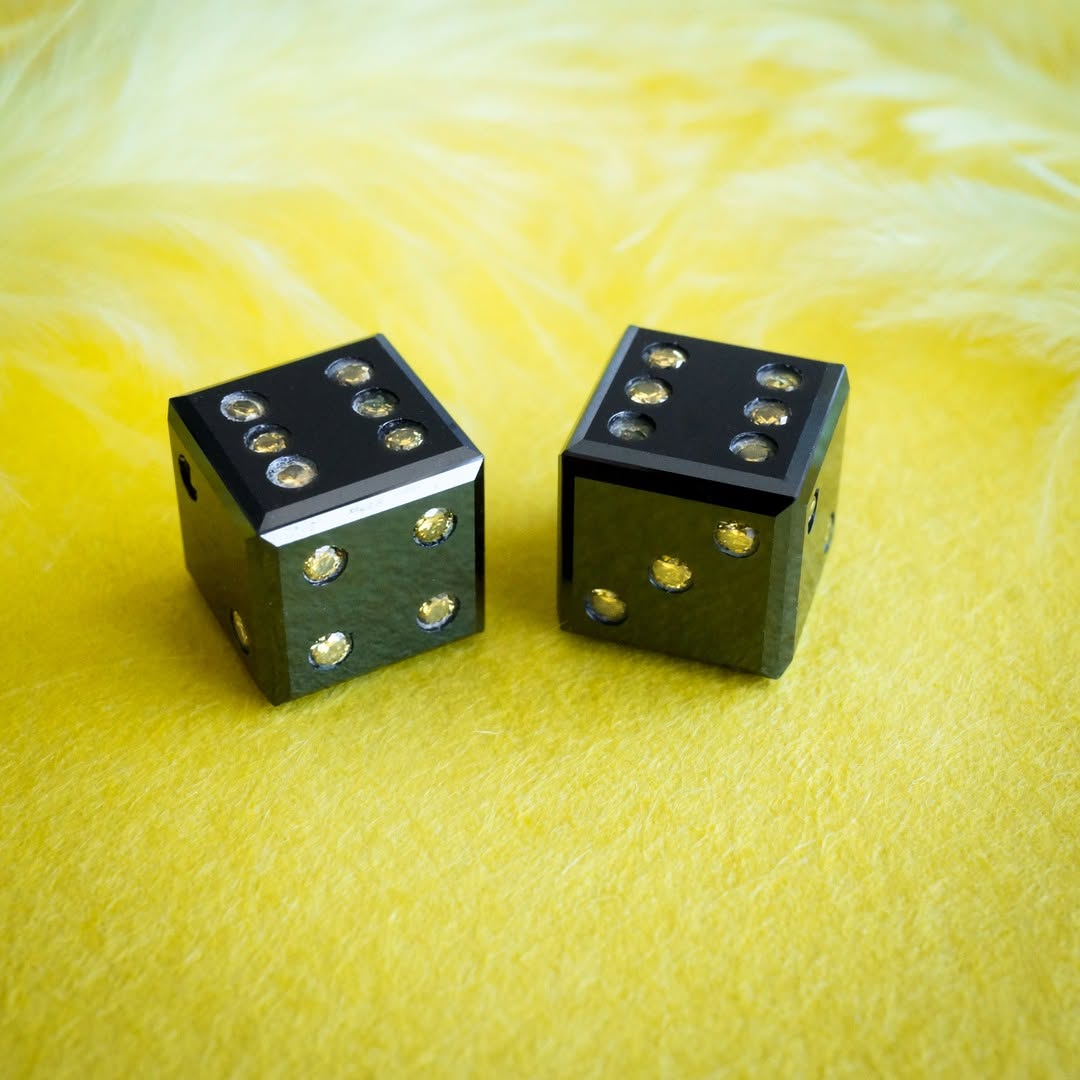
The Complete Buying Guide to Natural Yellow Diamonds (Updated 2025)
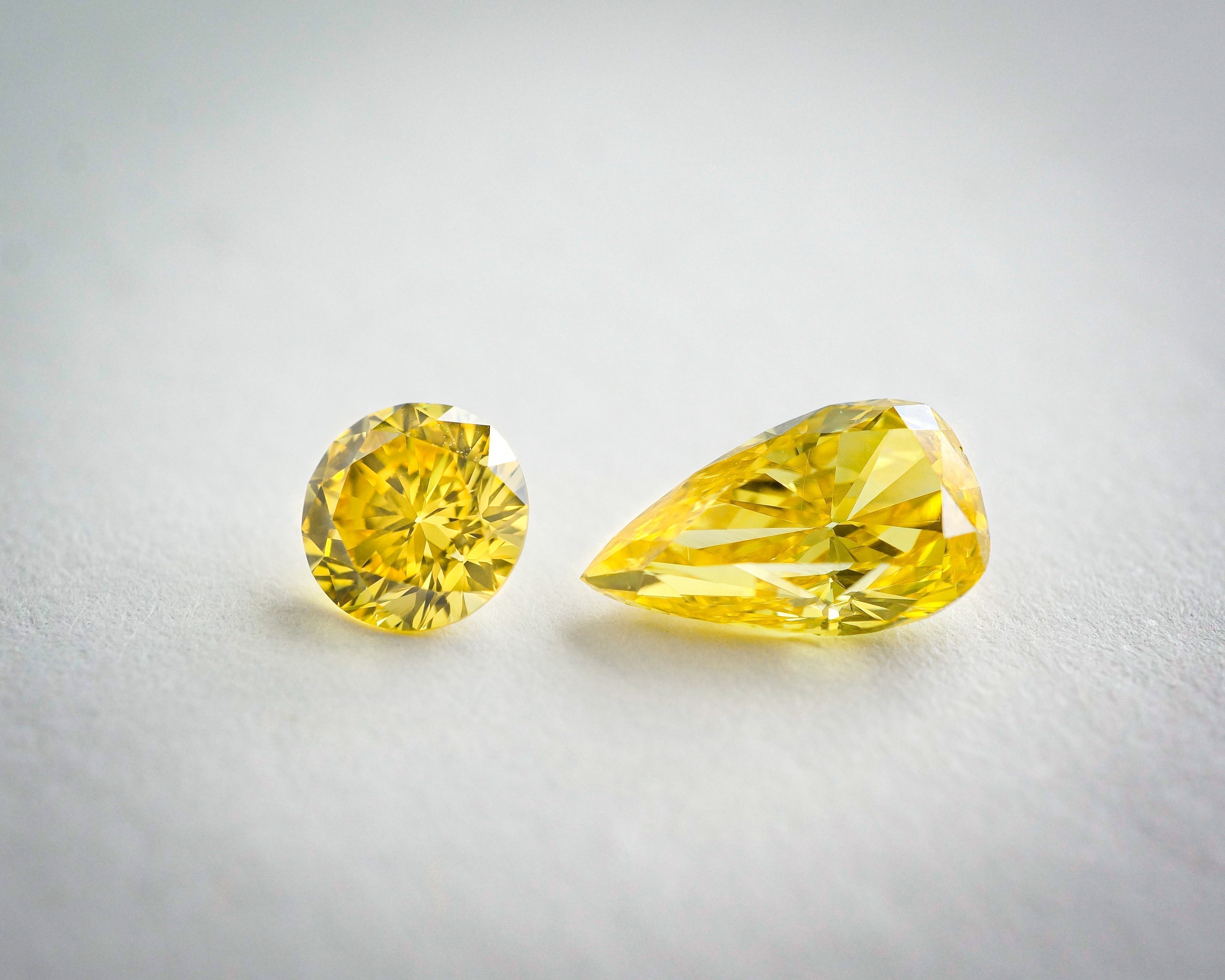
Yellow is a color that sparks joy, and natural yellow diamonds letyou carry that joy with you. Being the lightest hue of the spectrum, it is traditionally associated with positiveemotions. It’s believed that being in its presence is uplifting and can stimulate new ideas. Yellow diamond jewelry is an excellent way to carry this happy color with you.
This guide covers topics about natural yellow diamonds including their origin value and characteristics to look out for. You'll also find tips for designing stunning jewelry.
Related:
- Natural Treasures: Yellow and Brown Diamonds
-
Fancy Yellow Diamonds and Other Yellow Gemstones
- View our natural yellow diamonds for sale
What Are Yellow Diamonds?
Most diamond jewelry is made with colorless diamonds, the most abundant type. These diamonds are classified by a color grading system that goes from D colorless to Z light yellow. In this case, diamonds with a yellow tint are less expensive than the colorless grades. But once the color is saturated beyond a Z grade, they enter a new category: fancy color. And with this, the value of fancy color diamonds goes up due to their rarity. To put in perspective, only 1 in 10,000 carats of mined diamonds will be a color diamond. Colorless diamonds are widely available but fancy color diamonds are very scarce.
When diamonds formed millions of years ago, some came in contact with other elements, and this caused them to have different colors. Depending on the trace element, diamonds can be yellow, brown, pink, blue, green, orange, red, purple, black, gray, and hundreds of shades in between.
What Are Fancy Color Diamonds?
Most diamond jewelry is made with colorless diamonds, the most abundant type. These diamonds are classified by a color grading system that goes from D colorless to Z light yellow. In this case, diamonds with a yellow tint are less expensive than the colorless grades. But once the color is saturated beyond a Z grade, they enter a new category: fancy color. And with this, the value of fancy color diamonds goes up due to their rarity. To put in perspective, only 1 in 10,000 carats of mined diamonds will be a color diamond. Colorless diamonds are widely available but fancy color diamonds are very scarce.
When diamonds formed millions of years ago, some came in contact with other elements, and this caused them to have different colors. Depending on the trace element, diamonds can be yellow, brown, pink, blue, green, orange, red, purple, black, gray, and hundreds of shades in between.
Bespoke spring-inspired flower earrings in 18Kt yellow gold with colorless and natural yellow diamonds.
Fancy color diamonds are often graded by the increased color strength going from Faint to Fancy Deep. Diamonds identified as Fancy Intense and Fancy Vivid are considered the most desirable and command higher prices. At Langerman, we identify colors with a system based on the image and emotion each shade evokes. You will find names like Canary, Saffron, Vanilla, Gold, Bronze, and Honey for our yellow diamonds. This intuitive color classification makes it easier to communicate and understand the specific color shade of a natural color diamond.
Read more about color in natural diamonds.
The Origin of Natural Yellow Diamonds
Spectacular 1.93 carat, pear cut, fancy vivid yellow diamond from the Zimmi mine.
The presence of nitrogen molecules is traditionally what causes the mesmerizing yellow hue in diamonds. Natural yellow diamonds are found in regions, including:
-
Australia
-
Central Africa
-
Angola
-
Brazil
-
Borneo
-
The Democratic Republic of Congo
Among these, the Zimmi region (on the border of Sierra Leone and Liberia) is particularly notable. Zimmi yellow diamonds are prized for their vivid yellow-orange hues. Unique geological conditions make them among the rarest and most valuable yellow diamonds.
5 Things to know about natural yellow diamonds
-
Nitrogen atoms are responsible for giving most yellow diamonds their color.
-
Natural yellow diamonds are the most common color to find, but they are still rare as only 1 of every 10,000 carats mined is a color diamond.
-
The oldest diamond color-grading system dates back to VI century India, where color diamonds expressed social status. Yellow diamonds could only be worn by Kings and the merchant class.
-
Natural fancy yellow diamonds have been mined in different parts of the world, but South Africa is the most important source.
-
Pure color stones are rare; most color diamonds will display different saturation intensities and at least one overtone. For yellow diamonds, shades of green, orange and brown are the most common.
What Makes Natural Yellow Diamonds Unique?
Natural yellow diamonds, or Canary diamonds, are admired for their vibrant hue and rarity. Unlike colorless diamonds prized for their clarity, yellow diamonds are celebrated for their rich, captivating shades. Here’s what sets them apart:
- Chemical Composition: The presence of nitrogen in the diamond’s carbon structure is the primary cause of its yellow color. These nitrogen atoms absorb blue light, resulting in the beautiful yellow tones. The higher the concentration of nitrogen, the more intense the yellow hue.
- Wide Range of Shades: Yellow diamonds span a spectrum of shades, from pale yellow to vivid, intense tones. Secondary hues, such as green, orange, or brown, can also influence the diamond’s final appearance. Among these, pure yellow diamonds, especially those graded as Fancy Intense or Fancy Vivid, are the most sought-after.
- Versatility in Design: Their warm tones pair beautifully with various metals and settings, allowing for designs that range from bold contrasts to harmonious blends. For example:
- Platinum or white gold enhances vivid yellow diamonds with striking contrasts.
- Yellow or rose gold settings amplify the depth of lighter yellow hues.
What Shades of Yellow Diamonds Are There?
Our natural yellow diamond collection showcases a diverse array of shades, with each gem presenting unique saturation intensities and often featuring captivating overtones. While pure color diamonds are exceedingly rare, our yellow diamonds frequently exhibit hints of green, orange, or brown, adding depth and character to their appearance. Some of these hues include:
- Vanilla Diamonds (Light Yellow): Offer a subtle hint of color, perfect for those who prefer a gentle splash of yellow.
- Canary Diamonds (Fancy Intense Yellow): Known for their bright, vibrant color, canary yellow diamonds are highly sought after for their standout appearance.
- Jonquille Diamonds (Fancy Vivid Yellow): The term "Jonquille" itself is derived from the French word for the daffodil flower. These diamonds are a similar color to the flower.
- Gold Diamonds: These diamonds have a deep, rich yellow hue, reminiscent of golden sunlight, adding a luxurious feel to any jewelry piece.
Understanding the Value of Natural Yellow Diamonds
Several factors influence the value of natural yellow diamonds:
- Color Intensity Yellow diamonds are graded based on their saturation, ranging from Fancy Light to Fancy Vivid. The more vibrant and pure the yellow hue, the higher the value.
- Cut Fancy shapes like cushion, radiant, and oval cuts are preferred for yellow diamonds as they maximize color intensity and brilliance. Round cuts, often used for colorless diamonds, may dilute the vibrant yellow.
- Clarity Like all diamonds, natural yellow diamonds are evaluated for clarity. However, their vibrant color often masks minor inclusions, making "eye-clean" diamonds highly desirable.
- Carat Weight Larger yellow diamonds are significantly rarer, leading to exponential increases in price as carat weight increases.
Investment Value of Yellow Diamonds
Natural yellow diamonds have maintained and grown in value, especially those graded Fancy Intense or Fancy Vivid. Their rarity and universal appeal make them ideal for collectors and investors.
The demand for color diamonds, combined with the scarcity of high-quality yellow stones, ensures they remain a reliable and stable investment.
Canary Diamond: The Most Coveted Yellow
Oval-cut canary yellow diamond set in white gold with white diamonds.
From light to deep, there are multiple shades of yellow found in diamonds. Canary diamonds are the most sought-after because of their intense and pristine yellow color.
Perhaps the most famous example of a yellow diamond is the renowned Tiffany Diamond. Discovered in South Africa in 1877, the rough stone was 287.42 carat. One year later, it was acquired by Charles Lewis Tiffany who sent it to the Paris branch for cutting. The final stone is a magnificent 128.54 carat cushion-cut diamond with an impressive, fiery brilliance achieved with 82 facets—which was unprecedented at the time. Beyoncé recently made history when she became the fourth woman and first Black woman to wear the gem in a collaboration campaign with the brand.
Also unearthed in South Africa, the Sun-Drop diamond is an exceptional 110.03 carat specimen. The Sun-Drop diamond is the largest known pear-cut Canary yellow diamond. Tests suggest the stone was formed from 1 to 3 billion years ago.
Learn more about yellow diamonds.
Why Cut Matters In Natural Fancy Color Diamonds
Outstanding matching pair of cushion cut yellow diamonds.
When a master cutter faces a fancy color rough diamond, he or she must decide on a strategy to cut and polish the stone to ensure the best color distribution and even achieve the desired hue intensity. If a stone already has a dark color, cutting it too deep might deepen the color.
Fancy shapes—those that aren’t round—have been found to deliver the best color intensity and value.
How To Wear Intense Yellow Diamond Jewelry
Three-stone diamond ring featuring a saffron yellow diamond set in yellow gold.
Throughout history, yellow diamonds have been symbols of wealth and power. In ancient India, yellow diamonds were reserved for royalty and high-ranking merchants. Today, they remain a timeless choice for those seeking elegance and individuality in their jewelry.
Natural yellow diamonds offer versatility in jewelry design, allowing for either contrasting or harmonious styles:
- Contrast: Pair a vivid yellow diamond with platinum or white gold to emphasize its brilliance and create a striking visual effect.
- Harmony: Use yellow or rose gold settings to enhance lighter yellow hues, blending the diamond seamlessly with the warm tones of the metal.
- Popular Settings:
- Halo Settings: Highlight the yellow diamond with a circle of white diamonds, amplifying its sparkle.
- Side Stones: Add complementary stones to accentuate the central yellow diamond.
When designing your yellow diamond jewelry, you can follow two approaches: contrast or harmony. If you set your intense yellow diamond in 18 Kt white gold, the tone difference will make the saturated color even more noticeable. And if you choose an 18 Kt yellow gold setting, the diamond will blend with the warm metal color. Undecided? Try the subtle blush of 18 Kt rose gold.
Victoria Beckham and Heidi Klum both opted for a combination of yellow gold for their jaw-dropping yellow diamond rings. The yellow diamond embellished band is another feature their rings share, creating a monochromatic warm style.
Explore Langerman’s breathtaking natural yellow diamond selection.
Designing with Yellow Diamonds
Ring Settings
- Halo Settings. Surrounding a yellow diamond with white diamonds enhances its size and sparkle.
- Three-Stone Designs. Pairing a yellow diamond with colorless or other fancy-colored diamonds creates a dynamic, elegant look.
Metal Choices
- Platinum or white gold creates a bold contrast for vivid yellow diamonds.
- Yellow or rose gold settings enhance the warmth of lighter yellow tones.
Popular Cuts. Jewelers favor radiant and cushion cuts for their ability to balance color intensity and brilliance. This makes the diamond’s hue more vivid while maintaining sparkle.
Langerman’s Yellow Diamond Jewelry
Ornamental Ring
From the Langerman bespoke archives, this intricate 18Kt yellow gold ring is covered with natural fancy vivid yellow diamonds. The delicate, sparkling swirls make this ring an unforgettable statement piece. Contact us to design your own yellow diamond ring.
Flower Diamond Studs
Brilliant round cut yellow diamonds simulate petals in this 18Kt yellow gold design. Combined with white diamonds at the center, these earring studs are a feminine, playful design.
Heart Bracelet
Draw inspiration for a romantic gift from this yellow gold heart bracelet from our bespoke gallery. Adorned with canary yellow diamonds, a piece like this conveys romance and joy.
Browse some Yellow Diamonds
Final Thoughts
Yellow diamonds are an extraordinary choice for those seeking a blend of rarity, beauty, and timeless elegance. Their sunny hues bring joy to any jewelry piece, whether it's a stunning engagement ring or a bespoke statement design.
Explore Langerman’s curated collection of natural yellow diamonds and find the perfect piece to brighten your life.
Explore our website and create the natural color diamond jewelry of your dreams.
